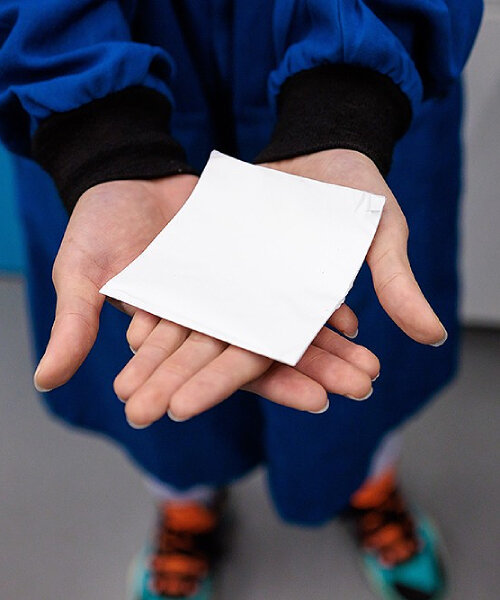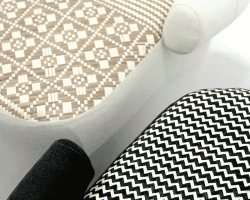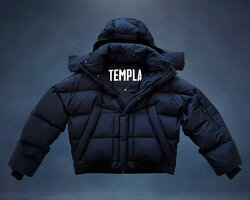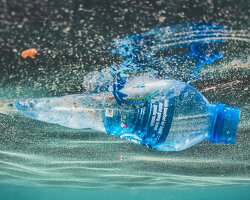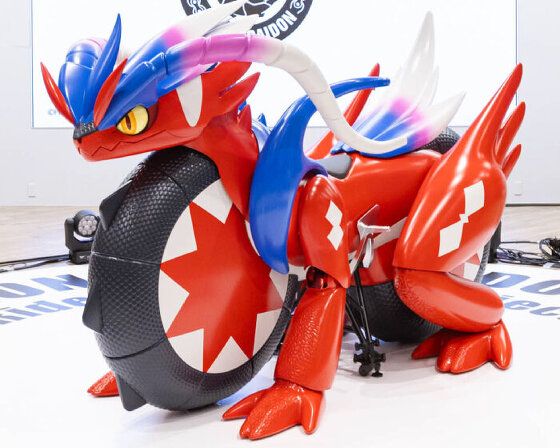University of Chicago researchers develop cooling fabric
Researchers from the University of Chicago’s Pritzker School of Molecular Engineering (PME) have developed a new wearable cooling fabric that can ward off heat and thermal radiation from buildings around cities, clothes, car designs, and even food storage. On top of that, the textile reduces heat from both the sun and thermal radiation from nearby buildings and pavements in urban areas often frequented by extreme temperatures and heat waves.
In return, people living in these areas can experience less warmth and a cooler feel. In a test run by the University of Chicago researchers under the Arizona sun in the US, the cooling textile can keep the temperature up to 2.3 degrees Celsius (4.1 degrees Fahrenheit) cooler than the broadband emitter fabric used for outdoor endurance sports.
It can also maintain coolness up to 8.9 degrees Celsius (16 degrees Fahrenheit) compared to the commercialized silk commonly used for shirts, dresses, and other summer clothing. Previously, high-tech textiles with nanodiamonds have been developed for clothing to help cool people down with their everyday wear.
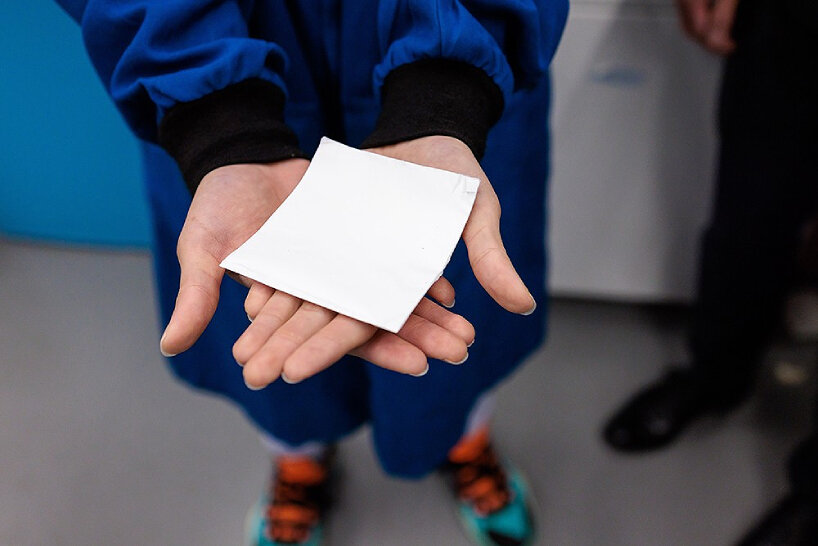
cooling fabric, photo by John Zich | all images courtesy of University of Chicago’s Pritzker School of Molecular Engineering
Cooling textile for buildings around cities, clothes, and cars
The University of Chicago researchers — composed of Ronghui Wu, Chenxi Sui, Ting-Hsuan Chen, Zirui Zhou, Qizhang Li, Gangbin Yan, Yu Han, Jiawei Liang, Pei-Jan Hung, Edward Luo, Dmitri V. Talapin, and Po-Chun Hsu — discovered that existing cooling fabric for outdoor sports works by reflecting the sun’s light in a diffuse pattern.
While this can help and even prevent blinding passersby, the sun is the only source of heat in an urban setting. This means that as buildings around cities, clothes, and cars sunbathe, additional thermal radiation is emitted from buildings and pavement, making the heat felt by the residents come from around them at once.
The researchers also claim that many materials that perform well in lab tests may not help city-dwellers in Arizona, Nevada, California, Southeast Asia, and China when predicted massive heat waves wash over them. As a solution, the researchers’ new cooling textile, which has received a provisional patent, hopes to provide a passive cooling system that can reduce heat and thermal radiation from the residents’ surroundings and reduce their need to use appliances that relieve warmth, such as air conditioning.
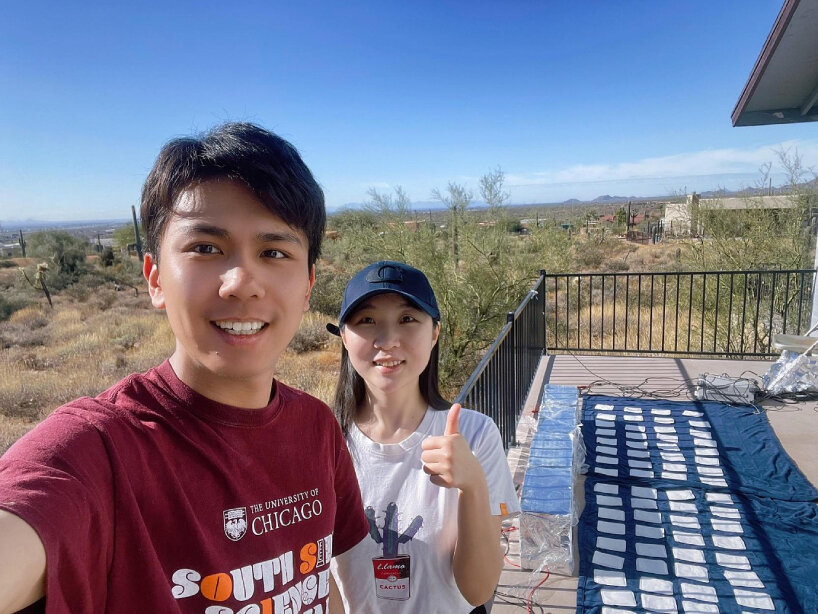
Chenxi Sui and Ronghui Wu testing their radiative cooling fabric in Apache Junction, Arizona | photo by Chenxi Sui
Reducing heat and thermal radiation for less air conditioning
A thicker version of the cooling fabric can also be developed and layered with an invisible film of polyethylene. The resulting can then be applied to the sides of buildings and cars to help lower their internal temperatures and reduce the use of air conditioning.
But this cooling textile isn’t exclusive to buildings and vehicles. Storage and transport boxes can also be wrapped with it to prevent milk and other food that easily rots from being spoiled in the heat. In this way, the need for refrigeration may be lessened. As of publishing the story, co-first authors Chenxi Sui and Ronghui Wu have already tested their new radiative cooling fabric in Apache Junction, Arizona, in 2023.
They also tried out the cooling material in the urban heat islands of Chicago, Illinois. Further development may be underway, and the researchers at the University of Chicago’s Pritzker School of Molecular Engineering hope that their cooling fabric can help people avoid the heat-related hospitalizations and deaths which may take place during heat waves and hot seasons.
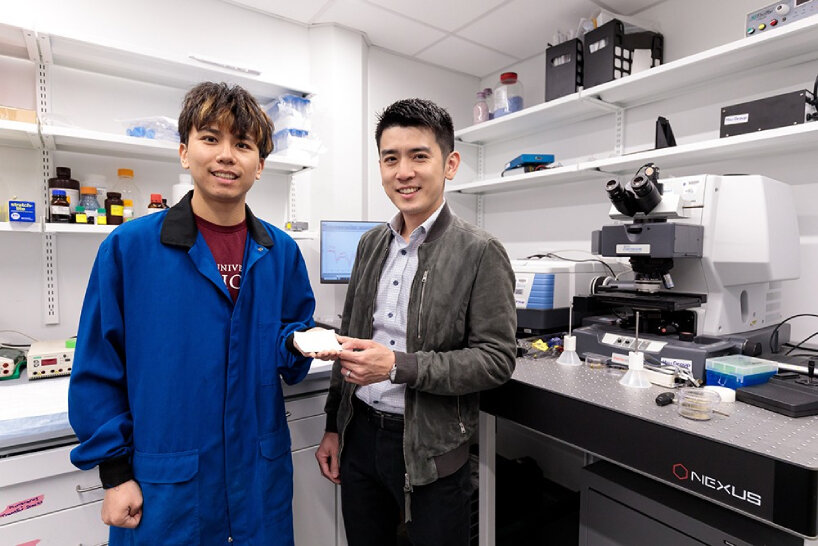
University of Chicago’s Pritzker School of Molecular Engineering PhD candidate Chenxi Sui (left) and Assistant Professor Po-Chun Hsu show off a sample of a new cooling textile | photo by John Zich
project info:
name: Radiative cooling fabric
institution: University of Chicago | @uchicago
school: Pritzker School of Molecular Engineering (PME)
researchers: Ronghui Wu, Chenxi Sui, Ting-Hsuan Chen, Zirui Zhou, Qizhang Li, Gangbin Yan, Yu Han, Jiawei Liang, Pei-Jan Hung, Edward Luo, Dmitri V. Talapin, Po-Chun Hsu
